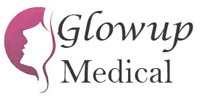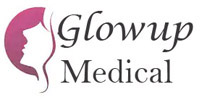What is lipolysis? Lipolysis, in biological terms, is the hydrolysis of triglycerides.1 This process can be divided into intra-adipocyte or intracellular lipolysis and extracellular lipolysis. Intra-adipocyte lipolysis is carried out by hormone-dependent lipases, which catalytic activity is directed at the lipidic reserves within intracytoplasmic vacuoles.1 This physiological phenomenon results in adipose cells releasing quantities of triglycerides (hence reducing intravacuolar level and adipocyte volume), which are split into long-chain fatty acids and glycerol. Intra-adipocyte lipolysis is a complex biochemical reaction, which begins when betareceptors on the cell membrane are activated by molecules such as catecholamines and cortisol (typically released in large quantities during fasting).1 Through second messenger activities (cyclic adenosine monophosphate, phospholipids and ions), the inhibition of phosphodiesterase is induced.1 This interrupts the blocking action of phosphodiesterase on intra-adipocyte hormone-dependent lipases that are now active and available to carry out the hydrolysis of triglycerides. Extra-cellular lipolysis on the other hand, is carried out by lipoprotein lipases which originate from muscular and adipose tissues. Lipoprotein lipases bind to the endothelium of vessels and split triglycerides into glycerol and fatty acids. The fatty acids are then used by the cells for energy or re-esterification into triglycerides in the adipose tissue and hence increasing the volume of intracytoplasmic vacuoles.1 Background and evolvement through the years Over the last fifteen years, the use of injectable solutions to reduce localised adiposity underwent a fundamental evolution. In 2003, we were introduced to phosphatidylcholine-sodium deoxycholate, which, at that time, was the only therapeutic alternative to liposuction. This non-surgical tool was made up of polyunsaturated phosphatidylcholine, which was made soluble by sodium deoxycholate, a detergent substance. Although the proper indication of this solution was the treatment of pulmonary fatty embolism, it was introduced to the cosmetic market after an early attempt to reduce xanthelasmas. The excitement within the industry was evident when the off-label use of this drug spread quickly. For the aesthetic treatment of localised adipose tissue, solutions containing phosphotidylcholine and sodium deoxycholate were injected subcutaneously, directly into the target tissue. The multiinjection treatment would sometimes be combined with various mesotherapy solutions. Many hypotheses exist on the mechanism of action of phosphatidylcholine on adipose tissue, but these were unsupported by any scientific data and often conflict with the general notions of human physiology.1 The other component of the drug, sodium deoxycholate, however, has been proven to have an emulsifying action at the cellular membrane level leading to cellular lysis.2,3 It is thought that it is likely that the detergent power of sodium deoxycholate towards the cell membrane is controlled by phosphatidylcholine, due to its restorative action on adipose cell membranes.1 Pasquale Motolese concluded in 2008 that the term adipocytolysis (cell lysis) appears more appropriate and even more indicative of the phenomenons tied to the action of phosphatidylcholine solutions introduced directly into the adipose tissue. Following the exclusive detergent action of sodium deoxycholate, a purely chemical destruction of adipose tissue would be achieved. Not long after its introduction, due to lack of scientific studies and serious concerns over nerve damage, permanent scarring, skin deformities and deeply painful knots under the skin in treated areas (all reported to the FDA), the drug was withdrawn from the aesthetics market in almost all countries. As the solution was not licensed for the reduction of fat, both the FDA and MHRA have raised concerns over misleading information and unlawful advertising of the drug as a cosmetic product for lipolysis.4 While British physicians can still inject phosphotidylcholine-sodium deoxycholate for fat removal, the drug cannot be promoted for that purpose and malpractice insurance for the use of the drug for fat removal has also been ceased. The great interest and widespread use of phosphotidylcholine has led to more research in this field. After rejecting the initial hypothesis of a lipolytic action of phosphatidylcholine, formulation of new injectable solutions emerged where only sodium deoxycholate was present as active ingredient. Given the aggressiveness of the molecule, this was unsuccessful due to the high risk of skin necrosis (Rauso, 2011).3 This further confirms the theory that phosphotidylcholine plays a role in controlling the exclusive detergent activity of sodium deoxycholate. Today, one method of administering injectable lipolysis is to use an aqueous, micro-gelatinous solution containing a biocompatible and biodegradable sugar-based slow release system. This new injectable formulation (Aqualyx) is a result of better understanding of physiology and the mechanism of action of previous solutions. The CE-approved solution does not contain phosphatidylcholine, but a mix of detergent compounds from the deoxycholate family that has been physically modified to reduce the biological halflife. The ingredients are a polymer from 3, 6-Anhydro-L-Galactose and D-Galactose, buffer systems, sodium salt of (3α, 5α, 12α) – 3, 12-dihydroxy-5-cholan-24-acid, water for injection purposes and sodium chloride. The solution is formulated to predispose the adipocytes to lysis amplifying the effects of external ultrasound, hence why it is recommended that the treatment be combined with an ultrasound for best results. The lipolysis injection causes the dissolution of fat cells, after which the body then expels the released fatty acids naturally2 (Salti, 2012). During treatment the product must be injected into the subcutaneous fat with a special technique, using a sharp cannula. By using this injection technique (branded Aqualysis), the number of punctures is reduced, therefore limiting the pain of injection sites for the patient. When the treatment is carried out correctly, patients generally tolerate the treatment very well with minimal discomfort. Pain during treatment is often a sign of incorrect technique, for example, contact with the bone or muscle. Treatment Aqualysis is a minimally invasive option for men and women who want to reduce stubborn pockets of local subcutaneous fat. An ideal patient would be someone who has a healthy diet and exercise plan but cannot shift small but resistant areas of fat such as saddle bags, thighs, back fat or ‘muffin tops’. The Aqualysis treatment is indicated for lipohypertrophy, subcutaneous lipohyperplasia, “buffalo hump”, superior lateral region of the thigh, medial thigh area and medial zone around the knee and hips. However, usage in other areas of the body, as deemed suitable by the physician after careful assessment, is common in practice. With over two million vials sold in the past five years in 49 countries, Aqualysis is easily tolerated by patients who want a small area treated and want to avoid more invasive options. As the treatment only destroys the fat cells in the treated area and works best in small areas, it can be recommended to patients as part of a healthy lifestyle regime. When looking at adiposity treatments in general, this can be seen as an alternative to more invasive methods when the areas of fat are localised and where the patient would prefer a minimally invasive option. It can also be used to ‘top up’ a liposuction treatment where there are minor adjustments to be made. It is important to bear in mind that this type of treatment is not recommended for obese patients. A pinch test result of between 1.5cm and 3cm is considered ideal for this treatment. As with all treatments, each patient will respond differently. An example being that the length of time to see an effect in younger patients is sometimes longer than older patients due to the better health of the fat cell walls. Results are usually seen over a course of treatments and it is recommended that the treatment cycle is three to four weeks. The treatment can be combined with an ultrasound treatment for best results. In Europe, around two thirds of physicians are not using the ultrasound and are still getting very effective results. The treatment takes less than an hour and the injected solution can also be combined with lidocaine for better patient comfort. In terms of side effects, this treatment is comparable to other needle-based treatments. Common side effects include swelling, bruising, minor aches and erythema. Case Study A 24-year-old female of Caribbean heritage presented with localised pocket of adipose tissue in her abdomen. This pocket of subcutaneous fat was located periumbilically, and was resistant to diet and exercise. As a full time model, this was a concern for her and she wanted the adipose tissue removed. Upon physical examination, her pinch test result was more than 1.5cm. The injection of an aqueous micro-gelatinous solution was proposed. She was fit and healthy, and was not on any medications. She was not pregnant or breastfeeding, and there were no obvious contraindications to the proposed treatment. The subject was fully informed of the side effects and the possibility of mild discomfort, and that results are usually seen over a course of treatments. The patient accepted the treatment conditions and gave an informed consent for the procedure. Photos were taken prior to the commencement of the procedure. Two sessions were proposed and eventually performed with one-month interval. In each session, two 8ml-vials of the aqueous micro-gelatinous solution were injected into the subcutaneous fat using intralipotherapy large area needles, as recommended. Ultrasound was not used with the treatment. At each sitting, the area to be injected was cleaned with 0.2% clorexidine, sterile gloves were used and asepsis rules were followed. After each session, subject reported light swelling and some bruising, which disappeared within a week. No other complications were reported. Clinical improvement was documented with photographs and reported by the patient. The patient was reviewed 8 weeks after the last session to assess the results. Throughout the treatment period, the patients diet and exercise plan remained the same. The proposed treatment was successful and the patient reported that she was very pleased with the outcome. Conclusion The aqueous, micro-gelatinous solution containing a biocompatible and biodegradable sugar-based slow release system was developed as a result of better understanding of the mechanism of action of existing solutions. Its use seems to be a safe and effective way to reduce stubborn areas of localised subcutaneous fat.




